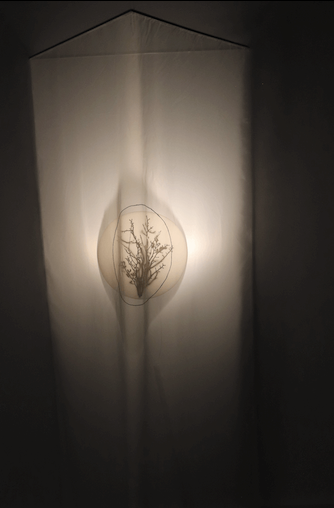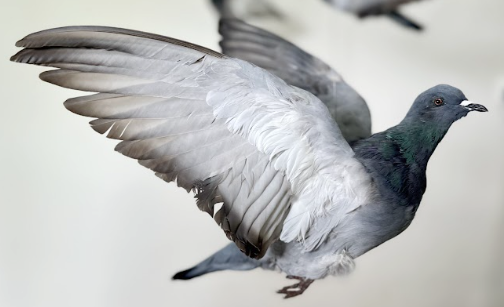by Dr Ellie Coleman and Dr Linda Clark
Becoming was an exhibition that was the culmination of practice-led research by Dr Linda Clark and Dr Ellie Coleman. Both artists developed sculpture and installation works for an initial exhibition titled Rise, which was held at the University of Southern Queensland Art Gallery in December 2022. The practice-led research insights gained from this exhibition included drawing on personal experiences to examine liminal spaces of mothering as subject matter, resulting in the reframing of those as places for powerful creative development. From this research, Clark and Coleman extended the works for the exhibition Becoming, which was held at the Queensland College of Art Webb Gallery, Griffith University from 12th April 2023 – 5th May 2023: https://app.griffith.edu.au/events/event/74041.








RESEARCH STATEMENT
Background Ongoing patriarchal boundaries are imposed on artists who are also mothers in arts discourse and industry which often discourages the presence of children, both as arts subject matter and in the broader gallery/industry context. Michelle Boulous Walker develops the term ‘maternal periphery’ which involves the historical and ongoing tendency for artists who are also parents, such as Mary Kelly, to shift their mother identities to the periphery of arts discourse and industry to ‘protect’ their artist identity. This problem can be further exacerbated when mother-artists live in regional areas and are therefore literally positioned on the periphery of arts discourse which predominantly takes place in metropolitan areas.
Contribution Becoming was an original exhibition that directly responded to ‘maternal periphery’ by exploring notions surrounding transitional spaces in physical and intangible states of being as powerful spaces for practice. These ever-evolving transitory spaces are concerned with liminality between the ending of the previous state and the beginnings of the new. These spaces are contextualised within the platform of liminality as they involve; transition as a process, a becoming, and in the case of rites of passage- transformation. This exhibition engaged concepts of trepidation, identity, threshold and evolution in order to further understand ‘the becoming’. The space where boundaries dissolve as we transition across the threshold of what we were, into what we are to be, was the catalyst for the development of the conceptual premise for Becoming. Dr Ellie Coleman and Dr Linda Clark draw on their lived experiences after creative doctoral research as professional artists and significant rites of passage such as mothering, personal relationships and professional progression as subject matter. In doing so, Coleman and Clark reframe liminal spaces as integral places of creative development and growth which we experience rather than as neutral, peripheral zones. Becoming consists of multiple sculptural installations which explore these in-between spaces and the significant role they play in everyday life. The work was brought from a regional area to be exhibited in a metropolitan space, thereby contributing to the sharing of new mother-artist perspectives, repositioning the periphery as a powerful space for practice.
Significance ‘Becoming’ was exhibited at Queensland College of Art Griffith University Webb Gallery in Brisbane, Queensland. This exhibition was a means of ensuring state-wide dissemination of the creative works and focus on mother-artists, and increased visibility of our work as a regional artists and academics from a regional university (UniSQ). The exhibition was accompanied by an exhibition statement with advertising by the gallery curator via two online platforms to national and international audiences. The exhibition was well attended by audience members from regional areas as well as the Brisbane metropolitan area, while the exhibition also received a review from a Brisbane art writer, Carrie McCarthy.
ADDITIONAL MATERIAL FROM THE AUTHORS
Becoming explored significant transitional spaces of mothering and marked a creative ceremony for us as practising artists. In Becoming I explored the transition to motherhood by reframing the infant nursery, utilising ethically sourced animal remains. My installations paid homage to the passage of memories, growth, and re-emerging by drawing on culturally embedded stories and reframing them visually; highlighting the phenomenon of transition in physical and metaphorical spaces. – Ellie Coleman
Negotiating the challenging years of parenting adolescents requires creative strategies to sustain maternal stamina. In my own experience, the invisibility of mothers and maternal labour, and the ambivalence of motherhood, are particularly enhanced when children appear old enough to take care of themselves, yet still need parental guidance. Paradoxically, this stage also signals the next phase of ‘letting go’ of motherhood.
This creative research represents how I utilise the ‘Mother-Artist Model (MAM)’ to create work that answers my own questions or concerns about ‘letting go’ of motherhood, through personal narratives in installation art. Through this model for practice, I disrupt social constructs for women and make them visible through alternate visual narratives, thereby dismantling the trope of the ‘helpless’ mother and normalising the powerful mother.
Strange Comfort: Stack Effect (2022), Strange Comfort: Memory Loss (2022), Strange Comfort: Fulfilled (2022) and Strange Comfort: Grown (2023) explore complex personal narratives of place, memory, and absence in the context of a child’s transition to adulthood and changing motherhood identities. The work occupies empty corners, replacing absence and loss with sculptural artefacts of memory, providing a feeling of strange comfort to the creator and possibly the viewer. – Linda Clark
Dr Ellie Coleman is an installation artist who is passionate about practice-led research and animal ethics particularly in contemporary art. In 2016, she graduated from a Bachelor of Creative Arts (First Class Honours) at the University of Southern Queensland. Most recently she completed a Doctor of Creative Arts in 2021. Coleman has more than ten years of professional experience and has been awarded a RedTrain Summer Research Scholarship USQ (2015), Australian Council for the Arts Grant (2018) and Contemporary Art Award (2019). She has showcased her work both nationally and internationally, including projects such as Antipods: Magical Creatures with Backward Feet, University of Saskatchewan, Canada and Australia Council for Arts funded touring exhibition Dark Rituals, Magical Relics from the little art spell book, Academy Gallery, University of Tasmania, Launceston which was accompanied by an artist book publication.
Dr Linda Clark is an installation artist exhibiting nationally and internationally, and a lecturer in Sculpture and Doctor of Creative Arts coursework at UniSQ. Her work has been included in key exhibitions such as Dark Rituals: Magical Relics from the Little Art Spellbook at the University of Sunshine Coast and UTAS, and Antipods: Magical Creatures with Backward Feet at University of Saskatchewan, Canada. She has also engaged in curatorial projects such as Tethered: Embodying the Mother-Artist Model at USQ Artsworx. In 2015, Clark won the Queensland Regional Art Awards Gray Puksand Digital Award. Clark’s doctoral research project at USQ investigated whether a practice-led research methodology titled ‘The Mother-Artist Model’ can be used within a collaborative network of mother-artists to facilitate practice, engagement and exchange, to overcome regionalism.
Main image: Ellie Colman Flights of Passage 2022 Stainless steel, wire, taxidermy Dimensions variable
